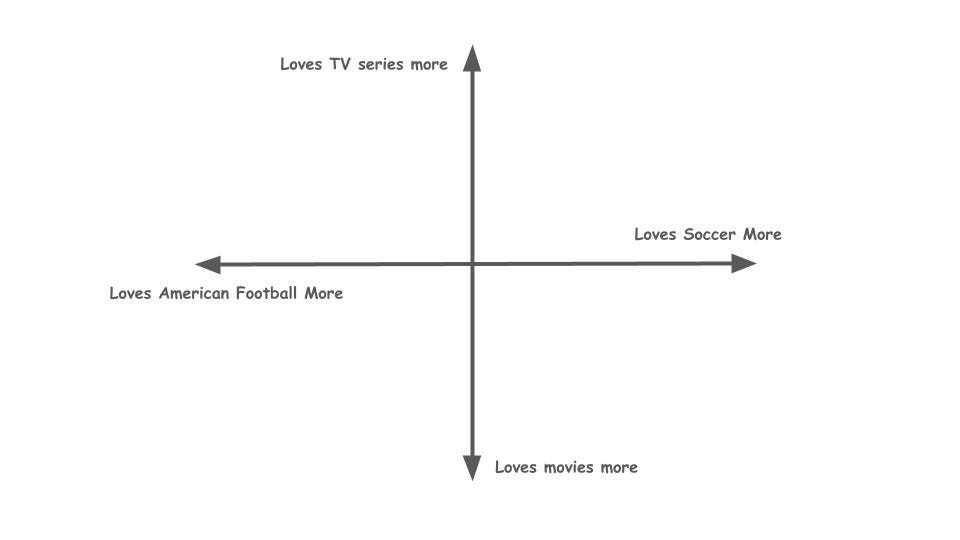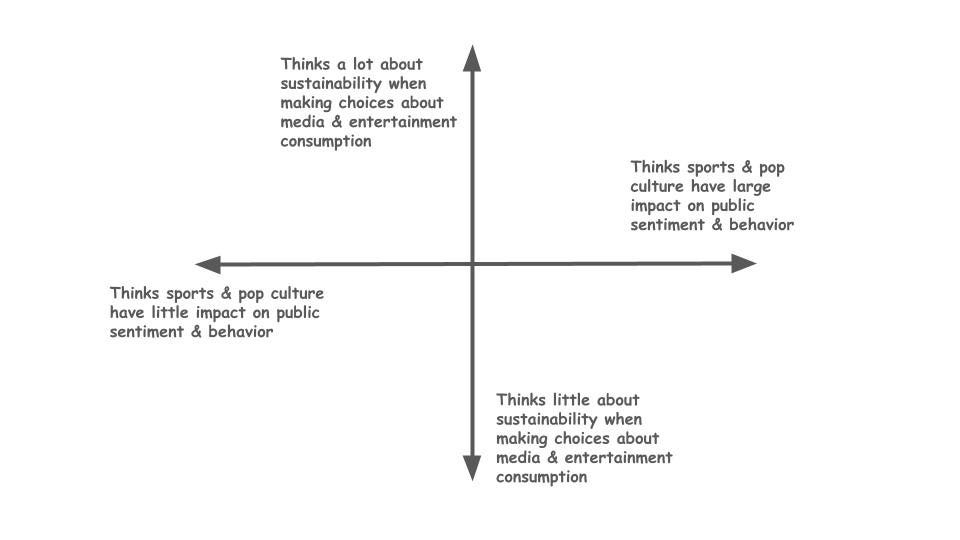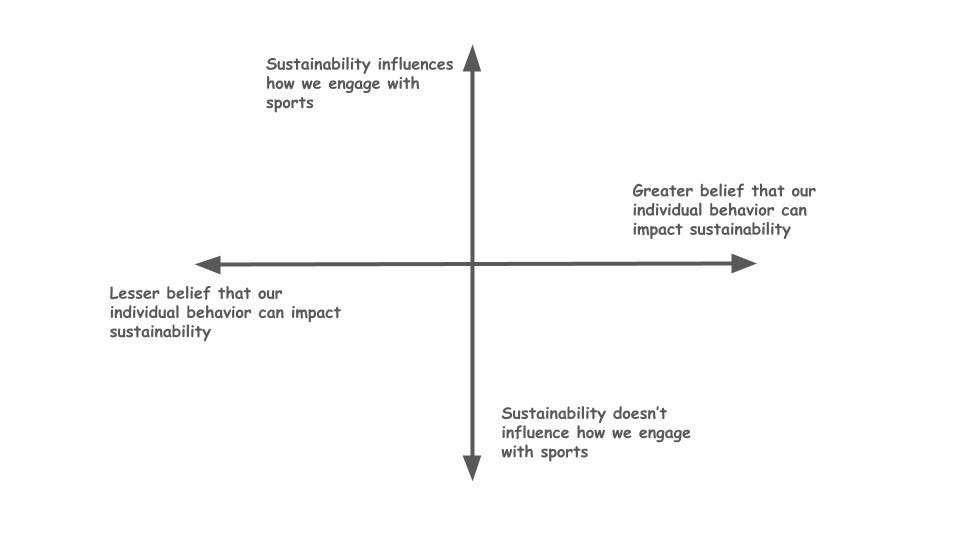Am I Doing My Best?
Over the last 4 months, I’ve been immersing myself more and more in Seattle’s “climate” community. Namely, I’ve been exploring and building with groups of people who care about stopping and reversing the disastrous effects and causes of climate change. These folx are focused on sustainability, land stewardship, oceanography, fundraising, startup strategy, marketing and so much more that goes into unraveling the biggest existential threat to humanity.
My personal climate journey began in nature, and the time I spent outside in New Mexico. Over the years, this bled into my professional work as I started designing nanotechnology for renewable energy harvesting, or solar windows. (Think transparent solar cells that you can install on the facades of buildings.) Since then, I’ve also worked on renewable energy batteries, helping design the materials needed to scale long-duration wind and solar energy storage. This has steeped me in a community of science nerds, mostly, who want to use their technical know-how to build impactful hardware, software, and everything in between.
In February, I joined a climate coworking space called 9Zero, which has an office in downtown Seattle. It’s a collab between UW CoMotion, the City of Seattle, and Vertue Lab. Since I started going into the office regularly, I have met people working on stuff beyond hard tech and materials science. I’ve talked with people in AI, agriculture, precision medicine, mining, meat production, reforestation, ocean conservation. The list goes on. Not to mention the strategists, consultants, and investors all thinking about how to economically incentivize climate solutions. This has given me hope that we have smart people helping row this fucker in the right direction. But the question persists, “are we doing enough? Am I doing enough?”
I love the 9Zero climate hub and the builders therein, but something critical seems to be missing — or at least still nascent in this community. When I’m there, people are like, “Yeah! Let’s build stuff! More solutions, faster!!” But I sense this is rooted in a deeper existential dread and fear that if they don’t work hard, things will fall apart faster than they are currently. And to be clear, they will break down faster if we fall into despair, depression, or apathy. But the irony is, at least for me, working hard offers little consolation to the soul burdened by thoughts of humanity’s untimely demise.
I often think back to a conversation I had with Chris Mantegna, a bioinformatics PhD at the University of Washington. She’s doing amazing work with eDNA to unlock insights about how foundational ocean-dwelling species are being affected, epigenetically, by the changing climate. She also runs a program called BWEEMS, black women in ecology, evolution, and marine science — with the goal of increasing representation and influence of black women in STEM.
She mentioned how for some students, doing field work in the Sound is their very first experience being in nature, with nature. And she made it very clear that the way to fuck up the experience for these aspiring climate professionals is to say, “Hey, see how broken all of this is? Welp, good luck fixing it!” In other words, focusing on the problem can burden newcomers with the unreasonable expectation that it’s all on them to fix this problem that they didn’t even cause in the first place. In her words, “It takes the joy out of it entirely.”
And working with students around the world for the last three years, training them how to use science and technology to solve hard, system-level problems, I can attest to the truth in her statement. Without joy, curiosity cannot flourish, and fear quickly stomps out our desire to work on hard problems that may seem insurmountable.
So this piece is about the other side of stress-building climate solutions. It’s about finding joy in the process, something I often struggle with. But if we (if I) can do this, we relieve ourselves of the dread which clouds our presence of mind and clarity of thought. And this, the work demands. The work needs.
The Soapbox Project
I recognize the art gallery from the sidewalk. A few months ago, Anjeli (who’s with me tonight) and I stumbled in here to kill time before meeting my Aunt Stella and Uncle Jamel at Umi for dinner. At the time, the walls were covered in Jessie Lipscomb’s aka Mama Lips Draw’s larger-than-life portraits of Black pop culture icons and expressions of Black joy. The paintings were gone, but the sense of place still lingered in my mind. I see a small sign in the window that reads, “Soapbox Project, Tuesdays 6–9 PM.”
We make our way inside and are greeted by friendly volunteers standing around a table set up with supplies to make nametags. One of the guys tells me, “You need to have at least 17 pieces of flair on your nametag!” Nivi Achanta, the creator of the Soapbox Project, approaches the table and warmly introduces herself. She shakes hands with Anjeli and says, “If you want to be your own person, and not just a plus-one, sign up for our newsletter!” Equipped with nametags and subscriptions, we move to the next room of the gallery and become instantly immersed in collage art and the tantalizing smell of mushroom stroganoff. A very tall man (who I later find out is Dustin Ronspies of Art of the Table) makes it very clear that he wants me to eat. Like, now. Which I appreciate because sometime the fanfare of an event can keep my stomach rumbling. I graciously accept and dig into the buffet while Anjeli saunters off to inspect the artwork.
On all four walls of the gallery, all around us, are countless A4-sized mixed media collages. They seem to be made of clippings taken from magazines and newspapers, colored to match a wall-specific motif. One wall all green designs, another all blue designs, and pink, and orange and so forth. Each collage is adorned with images of people, objects, and places. The closer you look, the more reveals itself. Some pieces include objects from various places around Seattle. I see one which incorporates a local Korean church’s tithing envelope filled with Monopoly money. Others feature thoughtfully arranged origami structures that evoke local flora. Others are sewn with thread tracing abstract shapes directly into the paper. Without speaking to more than 3 people, I am already lost in joy and awe and wonder. “Who made all this?” I think to myself.
We do the thing that most people do at a get together — stand in an awkward place trying to talk and eat. Nivi eventually comes over and offers an ingenious solution: to sit at one of tables set up for us! At the tables I notice some familiar faces from 9Zero, including Ted (Schaller) who I hosted on my podcast a while back. However, I end up sitting between two different 1:1 conversations, and have some trouble breaking the ice to interject. So I decide to take my compostable bowl and cutlery and LaCroix and relocate to the table behind me, where Nivi and a few others are sitting. I’m curious to hear more about the inception of the Soapbox Project.
She tells me that she moved from San Francisco to Seattle in 2020ish, and found a cozy pandemic pod with her partner and two friends. She was fed up with a series of unfulfilling roles at corporate tech companies, and was asking deeper questions about the purpose of her career. At the time, Soapbox was a newsletter that she started in the Bay, but as people craved more human interaction, it evolved into a vibrant online community. Now it’s a community that gathers every Tuesday to cultivate joy and meaningful connection with other humans grappling with climate anxiety. It’s no fun feeling helpless, but here, you don’t have to. Nivi has created a warm and welcoming environment where everyone I met was willing to share what was really on their hearts and minds.
At dinner I conversed with another human named Carson who told me that he can’t always talk with friends, and even close family, about climate, politics, etc. without feeling alienated and being told that “nobody wants to talk about this depressing stuff.” But here he was, speaking truth to his concerns and frustrations with climate and how he’s building a career in the sustainability of our food supply chains. Another woman at our table, Stuti, shared her life story and how her Indian parents pushed her away from a curiosity in environmental engineering, in favor of a more lucrative discipline: mechanical engineering. Despite being a successful professional, who literally worked for Boeing, she voiced a deep fear that many of us, including myself, hold: “What if I’ll never be good enough?” All of this came to light in a matter of 15 minutes. There must be something in the stroganoff. I’ll learn later that that “something” is love and commitment.
Sports, Pop Culture, & Sustainability.
After we’re all good and full of mushrooms and fruit and heartfelt conversation, Nivi takes the stage, with mic in hand, and kicks things off. Each week Soapbox cycles through one of four event themes. Connect, Learn, Act, Reflect. She explains the focus of tonight’s “ACT” session will be to create “activations” centered around sustainability, sports, and pop culture. The FIFA World Cup is coming to Seattle in a year and the city is pumping money into downtown rejuvenation projects that will bring more commerce to local businesses as millions of soccer fans descend upon the city, buzzing with vuvuzelas and cash. She explains that this is a huge opportunity for us to lobby the Mayor to implement ideas that will “create the Seattle we deserve” and do so sustainably.
I love Nivi’s use of the term “activation” because it’s clear that her goal was to get this group of sustainable-minded people to take civic action by brainstorming ideas for how our local government can deploy $800,000 to create joyful spaces downtown. And not just for those visiting, but for those who live here and will continue to do so long after Peru wins the Cup (ok, I had to let you know who I’m rooting for!).
Nivi’s speaking style evokes story. It’s at once playful, endearing, funny, serious, empathetic. It’s energizing. Most notably, she creates tons of space for people to ask questions and share impressions and reflections from this month’s earlier meetings around connection and learning. And in this space, I witness humanity flourish. A highlight of the night, was the story of Chef Dustin, whom I mentioned earlier.
Nivi recollects how she walked into his and his wife’s restaurant one day, asking to hang up what she describes as “made-in-Canva” flyers in a “four-dollar-sign-on-Google restaurant” window. She had low expectations that the Chef and proprietors would be willing to support her cause. But to her surprise, Chef Dustin not only agreed to promote and amplify her mission, but also generously offered to feed members of the community. For free.
That was many moons ago. As it turns out, tonight’s Soapbox meeting would be the Chef’s last. After 18 years, he and his wife are closing their business and starting a new chapter in life with their children in Spokane. Dustin’s response to Nivi hit a chord with everyone in the room. He spoke of closing his restaurant with a sense of deep loss. Earlier he told me he lost a lot of friends in the culinary community during covid, and now again with the closing of this chapter. Most of all, he expressed overwhelming gratitude for this community that Nivi and so many others have worked tirelessly to foster. In his own words, “you have no idea how much I needed this.” Tears welled in his eyes as he clapped his way out of saying more, and the room followed his lead.
It was obvious that this Chef had done more than feed people. For countless Soapboxes, he nourished souls hungering for human connection and joy.
Games With Strangers
“That’s enough emotion for one night,” joked Nivi as she invited Anna, a longtime Soapbox teammate, to take the stage and walk us through an idea-sharing game. We made our way back to the main art gallery area and Anna divided the room into four quadrants that we could visualize with our mind’s eye. The goal was to consider the x-y axes as sliding scales of belief and preferences, to locate ourselves physically along these scales, and discuss our beliefs with others. I’ve drawn them out below. The discussion prompts got deeper, more abstract, and more focused on sustainability as we proceeded through each round of the game.
We spoke of Billie Eilish and her veganism. Of Taylor Swift’s Eras Tour and how she’s fucking up the environment with her private jets and bus caravans. Of how Yao Ming put the kibosh on shark fin soup with a single-handed campaign. We spoke of fast fashion and Kim Kardashian’s moral obligation to use her influence to push for sustainable clothing materials and produce clothes designed for longevity. We spoke of our individual responsibility toward stewardship of sustainable practice and how growing up with frugal parents “kind of tricks you into living a sustainable lifestyle as an adult.” We move, we play, we connect. It’s beautiful.
Finding Our Way Home
Anjeli and I had to leave before we got to the next activity because of a puppy at home named Kobe, who has a puny bladder. However, given the discussion, I assume folks were next going to brainstorm proposals to send to the Mayor’s Office, pushing for the installation of art and other downtown infrastructure that will turn Seattle into a place that brings people joy and happiness. I wish I could have stayed.
On the walk back to our car, Anjeli and I shared our reflections. The first thing we both say is how safe it felt in the space and among others in the room. Everyone I met was willing to skip the small talk, and instead opt for convos for what really mattered to them. The event didn’t remotely have the transactional feeling I sometimes get at 9Zero. People weren’t there to partner on business ventures or secure capital for their climate solutions. They were there to connect as humans. They were there to play. They were there to feel less alone in a world where that’s becoming the norm. About a quarter of the way through, I felt my body relax and I realized, I’m always trying so hard to get something out of experiences. I’m always trying to make them “worth it.” But what if I didn’t? What if I let go of all expectations of “building” anything? Turns out — something wonderful happens.
So here’s a note to all the technical climate builders out there, past and present:
If we always approach climate from the problem side first, there is little room left for experiencing joy, play, and wonder. We get so stressed about the “crisis” we forget to breathe in and remember that there is so much awe to experience about the nature within us and around us. But if we can tap into that presence, it suddenly becomes very clear what and who we’re fighting for. So call your friends. Tell them to meet you outside, and go play.
tl;dr: Chef D’s mushroom stroganoff hits!!! 🔥





